Related Research Articles

Los Alamos National Laboratory is one of the sixteen research and development laboratories of the United States Department of Energy (DOE), located a short distance northwest of Santa Fe, New Mexico, in the American southwest. Best known for its central role in helping develop the first atomic bomb, LANL is one of the world's largest and most advanced scientific institutions.

Stanisław Marcin Ulam was a Polish mathematician, nuclear physicist and computer scientist. He participated in the Manhattan Project, originated the Teller–Ulam design of thermonuclear weapons, discovered the concept of the cellular automaton, invented the Monte Carlo method of computation, and suggested nuclear pulse propulsion. In pure and applied mathematics, he proved some theorems and proposed several conjectures.

The United States Department of Energy (DOE) is an executive department of the U.S. federal government that oversees U.S. national energy policy and energy production, the research and development of nuclear power, the military's nuclear weapons program, nuclear reactor production for the United States Navy, energy-related research, and energy conservation.

Los Alamos County is a county in the U.S. state of New Mexico. As of the 2020 census, the population was 19,419. The smallest county by area in the state, Los Alamos County was formerly administered exclusively by the U.S. federal government during the Manhattan Project, but it now has equal status to New Mexico's other counties. The county has two census-designated places: Los Alamos and White Rock.

A nuclear and radiation accident is defined by the International Atomic Energy Agency (IAEA) as "an event that has led to significant consequences to people, the environment or the facility." Examples include lethal effects to individuals, large radioactivity release to the environment, or a reactor core melt. The prime example of a "major nuclear accident" is one in which a reactor core is damaged and significant amounts of radioactive isotopes are released, such as in the Chernobyl disaster in 1986 and Fukushima nuclear disaster in 2011.
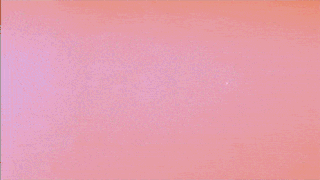
Operation Sandstone was a series of nuclear weapon tests in 1948. It was the third series of American tests, following Trinity in 1945 and Crossroads in 1946, and preceding Ranger. Like the Crossroads tests, the Sandstone tests were carried out at the Pacific Proving Grounds, although at Enewetak Atoll rather than Bikini Atoll. They differed from Crossroads in that they were conducted by the Atomic Energy Commission, with the armed forces having only a supporting role. The purpose of the Sandstone tests was also different: they were primarily tests of new bomb designs rather than of the effects of nuclear weapons. Three tests were carried out in April and May 1948 by Joint Task Force 7, with a work force of 10,366 personnel, of whom 9,890 were military.
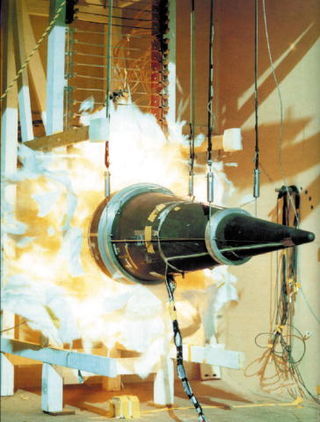
Stockpile stewardship refers to the United States program of reliability testing and maintenance of its nuclear weapons without the use of nuclear testing.

George Bohdanovych Kistiakowsky was a Ukrainian-American physical chemistry professor at Harvard who participated in the Manhattan Project and later served as President Dwight D. Eisenhower's Science Advisor.
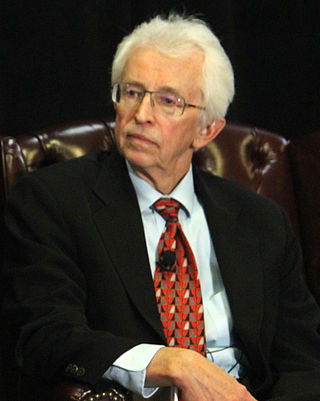
Siegfried S. Hecker is an American metallurgist and nuclear scientist. He served as Director of the Los Alamos National Laboratory from 1986 to 1997 and is now affiliated with Stanford University, where he is research professor emeritus in the Department of Management Science and Engineering in the School of Engineering, and senior fellow emeritus at the Freeman Spogli Institute for International Studies. During this time, he was also elected a member of the National Academy of Engineering (1988) for outstanding research on plutonium and the forming of materials, and for leadership in developing energy and weapons systems.

Darleane Christian Hoffman is an American nuclear chemist who was among the researchers who confirmed the existence of seaborgium, element 106. She is a faculty senior scientist in the Nuclear Science Division of Lawrence Berkeley National Laboratory and a professor in the graduate school at UC Berkeley. In acknowledgment of her many achievements, Discover magazine recognized her in 2002 as one of the 50 most important women in science.
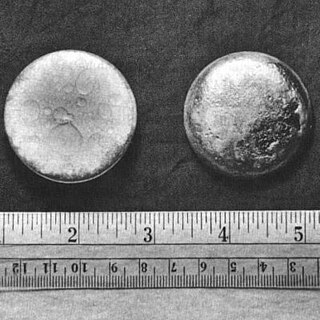
Plutonium is a chemical element; it has symbol Pu and atomic number 94. It is an actinide metal of silvery-gray appearance that tarnishes when exposed to air, and forms a dull coating when oxidized. The element normally exhibits six allotropes and four oxidation states. It reacts with carbon, halogens, nitrogen, silicon, and hydrogen. When exposed to moist air, it forms oxides and hydrides that can expand the sample up to 70% in volume, which in turn flake off as a powder that is pyrophoric. It is radioactive and can accumulate in bones, which makes the handling of plutonium dangerous.

Sulamith Goldhaber (Hebrew: שולמית גולדהבר; November 4, 1923 – December 11, 1965), née Low, was a high-energy physicist and molecular spectroscopist. Goldhaber was a world expert on the interactions of K+ mesons with nucleons and made numerous discoveries relating to it.
The Kiviter process is an above ground retorting technology for shale oil extraction.

The Los Alamos Neutron Science Center (LANSCE), formerly known as the Los Alamos Meson Physics Facility (LAMPF), is one of the world's most powerful linear accelerators. It is located in Los Alamos National Laboratory in New Mexico in Technical Area 53. It was the most powerful linear accelerator in the world when it was opened in June 1972. The technology used in the accelerator was developed under the direction of nuclear physicist Louis Rosen. The facility is capable of accelerating protons up to 800 MeV. Multiple beamlines allow for a variety of experiments to be run at once, and the facility is used for many types of research in materials testing and neutron science. It is also used for medical radioisotope production.
Betty Wright Harris is an American chemist. She is known for her work on the chemistry of explosives completed at Los Alamos National Laboratory. She patented a spot test for detecting 1,3,5-triamino-2,4,6-trinitrobenzene (TATB) in the field, which is used by the Federal Department of Homeland Security to screen for nitroaromatic explosives.
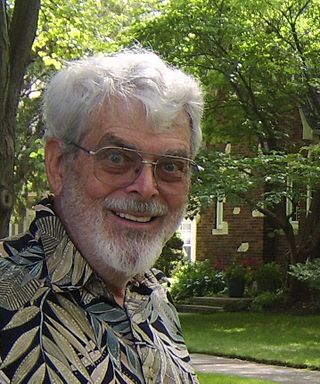
Johndale C. Solem is an American theoretical physicist and Fellow of Los Alamos National Laboratory. Solem has authored or co-authored over 185 technical papers in many different scientific fields. He is known for his work on avoiding comet or asteroid collisions with Earth and on interstellar spacecraft propulsion.

Thomas Mason is a Canadian-American condensed-matter physicist who serves as the director of Los Alamos National Laboratory. Prior to this appointment, he had been an executive at Battelle Memorial Institute from 2017 to 2018, and the director of Oak Ridge National Laboratory from 2007 to 2017. Mason moved to Oak Ridge in 1998 at the start of construction of the Spallation Neutron Source which he led from 2001 until project completion in 2006.
Dana Dattelbaum is an American physicist and scientist at Los Alamos National Laboratory. She leads NNSA’s Dynamic Materials Properties portfolio at LANL, which provides experimental data, platforms and diagnostics for materials behaviors relevant to nuclear weapons performance, ranging from plutonium to high explosives.
Mary Yvonne Pottenger Hockaday is an American physicist who works at the Los Alamos National Laboratory. She was elected a Fellow of the American Association for the Advancement of Science in 2014 and the American Physical Society in 2022.
References
- ↑ "Getting to Know Cheryl Rofer | Arms Control Association". Archived from the original on 2022-05-31. Retrieved 2022-03-25.
- 1 2 Rofer-DePoorter, Cheryl K. (1981). "A comprehensive mechanism for the Fischer-Tropsch synthesis". Chemical Reviews. 81 (5): 447–474. doi:10.1021/cr00045a002. ISSN 0009-2665. Archived from the original on 2022-03-25. Retrieved 2022-03-04.
- ↑ "Cheryl Rofer '63 dishes nuclear energy on blogosphere | Ripon College". Archived from the original on 2022-03-25. Retrieved 2022-03-04.
- ↑ Rofer, Cheryl K.; Kaasik, Tõnis (2000). Rofer, Cheryl K; Kaasik, Tõnis (eds.). Turning a Problem into a Resource: Remediation and Waste Management at the Sillamäe Site, Estonia. doi:10.1007/978-94-011-4092-8. ISBN 978-0-7923-6187-9. OSTI 785026. Archived from the original on 2022-03-25. Retrieved 2022-03-04.
- ↑ https://www.linkedin.com/in/cheryl-rofer-85956413 [ self-published source ]
- ↑ "Cheryl Rofer". Bulletin of the Atomic Scientists. Archived from the original on 2022-03-25. Retrieved 2022-03-04.
- ↑ Mexican, Anne ConstableThe New. "Former LANL chemist blogs on all things nuclear". Santa Fe New Mexican. Archived from the original on 2022-03-25. Retrieved 2022-03-04.
- ↑ Rofer, Cheryl (2013-02-27). "Is Iran building a bomb? A nuclear scientist says we need to look closer". The Globe and Mail. Archived from the original on 2022-08-21. Retrieved 2022-03-04.
- ↑ Rofer, Cheryl. "Never mind the doubters: the Iran deal is good enough". Mother Jones. Archived from the original on 2022-03-25. Retrieved 2022-03-04.
- ↑ Krämer2022-03-01T15:34:00+00:00, Katrina. "Fears for Ukraine's nuclear facilities follow Russian troops taking charge of Chernobyl site". Chemistry World. Archived from the original on 2022-03-01. Retrieved 2022-03-04.
{{cite web}}: CS1 maint: numeric names: authors list (link) - ↑ Castelvecchi, Davide (2022). "Ukraine nuclear power plant attack: scientists assess the risks". Nature. doi:10.1038/d41586-022-00660-z. PMID 35246645. S2CID 247236712. Archived from the original on 2022-03-04. Retrieved 2022-03-04.
- ↑ Vergano, Dan. "A Ukrainian Nuclear Plant Is Now A War Zone. Here's What That Means". BuzzFeed News. Archived from the original on 2022-03-04. Retrieved 2022-03-04.
- ↑ "Russian President Vladimir Putin Calls For Ukraine To Break Apart, Escalating Crisis". HuffPost UK. 2022-02-21. Archived from the original on 2022-03-03. Retrieved 2022-03-04.